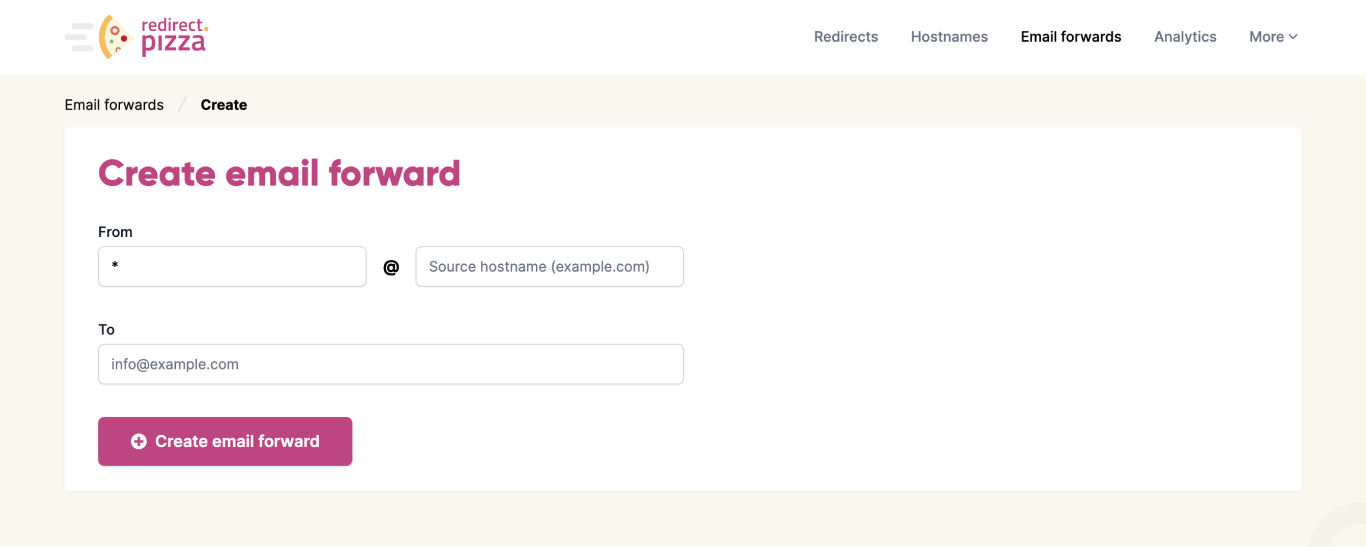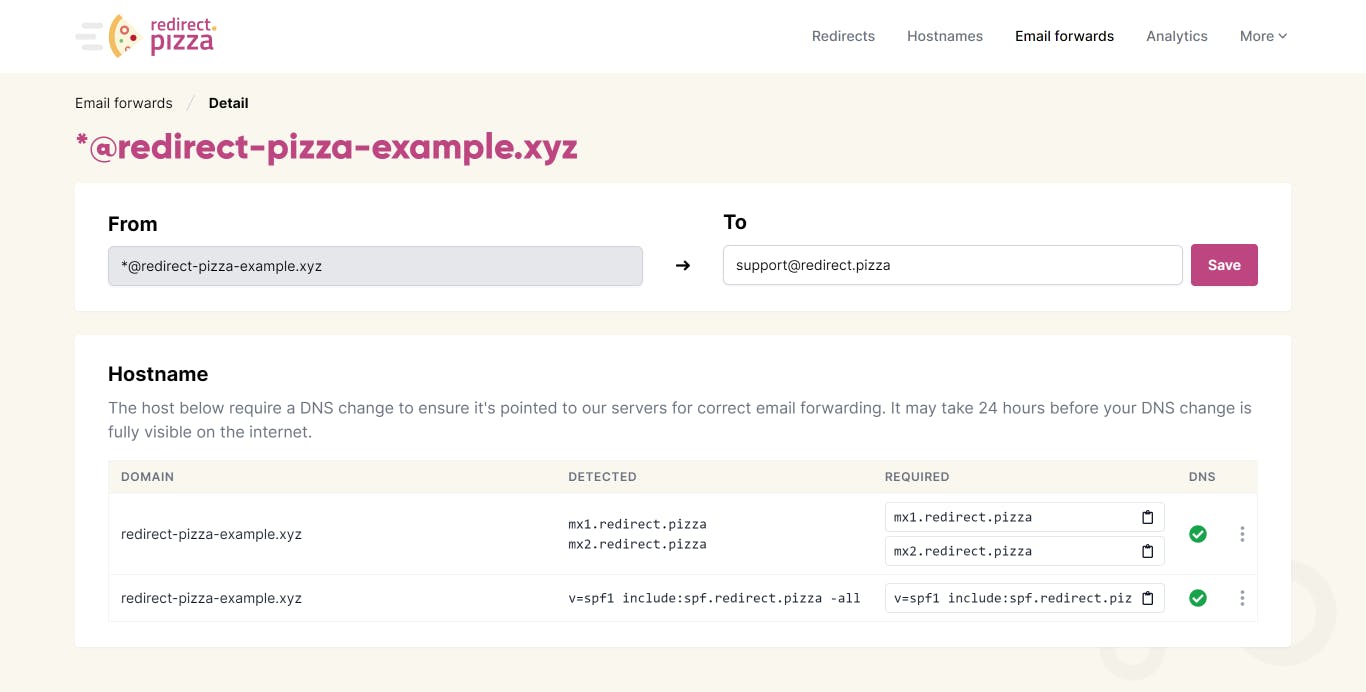Email forwards can be really usefull if you still receive email on your old domain, but don't want to lose it or give your customers a bad expierence by receiving a bounce. By setting up an email forward on your domain, you can ensure all emails are still received correctly.
How to set up email forwarding using redirect.pizza
The process of creating an email forwarding rule is very easy in redirect.pizza. There are only a couple of steps required:
Step 1: Enter the email address to be forwarded: after clicking on the “email forwards” tab, you’ll be prompted to enter the “from” fields. This is where you enter a specific email account where you want the emails to be forwarded. Let’s use the UK version as an example: info@company.co.uk.
Step 2: Enter the “to” destination address: fill in the email address where to emails should be forwarded to. In this case, it’s info@company.com. Now, all emails sent to the UK email address (.co.uk) will automatically be forwarded to the US email address (.com).

Step 3: Update DNS settings: to ensure that your emails will be forwarded correctly, you’ll need to update your domain name server (DNS) settings. redirect.pizza will give you an easy-to-setup MX & TXT record to help you with this. These records have to be entered in the DNS settings of your domain registrar (such as Goddady or Namecheap). redirect.pizza will automatically check if the settings are updated correctly. Usually, it will take 30 minutes for DNS settings to update.

Step 4: Test your forwarding rule: when you see the green checkmarks in redirect.pizza, it means that your DNS settings up-to-date and validated. This indicates that your email forwarding rule should be active. Test it out by sending an email! You should see the email on the detail page as well under ‘Logs’.
Keeping the alias intact with regex
Let's say you want to redirect bob@example.com to bob@new-domain.com. You can add a specific redirect for Bob, but if you have a large team, this requires a lot of different email forwards.
For this, you can use regex based forwarding. For example:
From: ([a-z.-]+)@example.com
To: $1@new-domain.com
This will get the alias (everything before '@') from the domain (in this case, 'bob'), and paste in into the 'to' part. Sending it to bob@example.com, or sending it to jenny@example.com, will forward it to the right person.
Multiple email forwards
If you configure more than one forward for the same domain, including a catch-all rule, an incoming message can be delivered more than once. For example:
support@emaildomain.com to help@newdomain.com
*@emaildomain.com to info@newdomain.com
When someone sends an email to support@, it matches both the specific forward and the catch-all rule. This means the message will be forwarded to both help@ and info@.
